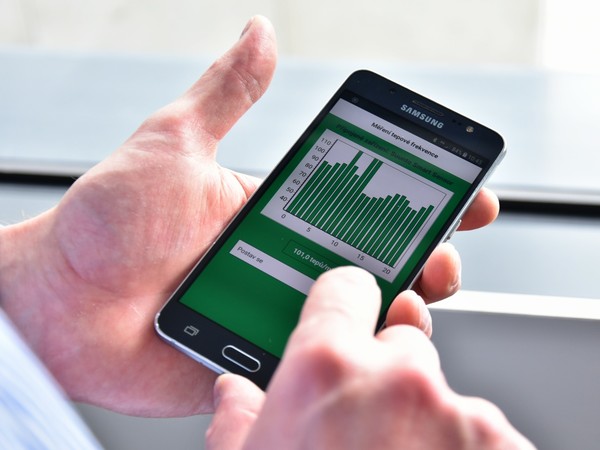Scientists from the UP Faculty of Physical Culture, in cooperation with the UP Science and Technology Park, have developed a unique algorithm for evaluating heart rate, which can be used to monitor stress in employees. Thanks to the significant shortening and simplification of measurements, the application can also be used at home as well as during work.
Measurement of heart rate variability (HRV) is still commonly used, especially with athletes. Physiological fluctuations in heart rate reflect the activity of the nervous system and are an objective indicator of the body’s response to physical and mental stress, regardless of the individual’s feelings. However, the measurement results can also be used to evaluate the condition of employees who have to work under some kind of pressure. By monitoring and evaluating the variability of the heart rate, it is possible to determine the level of their overwork and help reduce the risk of work injury or incapacity to work.
“Monitoring employees today seems to be a very promising idea. We decided to deal with it in order to prevent the risk of burnout, injury, and errors due to inattention or exhaustion, and it was done to meet also actual requirements from the industry,” said Petr Suchomel from the UP Science and Technology Park.
The developed mobile and web application uses ordinary chest straps communicating via Bluetooth technology for measurement. “The main advantage of the application is the reduction of measurement time to three minutes from the original fifteen, which was needed for measurement by an older desktop application developed at the faculty more than twenty-five years ago by a team of researchers around Assoc Prof Salinger and Prof Opavský. The first significant shortening of the examination algorithm to ten minutes was proposed by Assoc Prof Botek, who has long been involved in the use of HRV measurements in athletes. However, it is this new mobile application that finally allows the radical saving of time required for HRV measurement,” said Jakub Krejčí, the main researcher of the project from the Department of Natural Sciences in Kinanthropology. Measurement takes place during one minute of standing and two minutes of lying down. In addition to the measurement itself, the tested person also answers several questions about their feelings.
The application then evaluates the data, calculates the “TR” score, and proposes specific recommendations concerning further training or workload. The results and recommendations can be viewed in the mobile application and in the web interface and shared with a coach or authorised employee in the company. The application can be adapted through minor modifications to monitor diverse variations of stress according to the actual needs of the client.
This new diagnostic tool was created thanks to the Proof-of-Concept project of the UP Science and Technology Park, which was co-financed by the Technology Agency of the Czech Republic within the GAMA programme. The UP Faculty of Physical Culture and its BALUO Application Centre participated as partners in the project. The research team is now looking for commercial partners to further develop the application.
